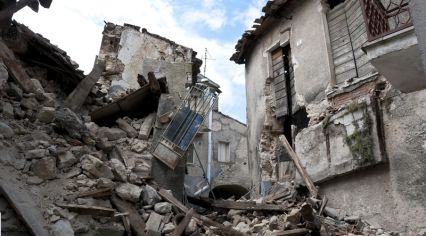A rare earthquake occurred approximately 100 miles off the coast of Cape Canaveral on Wednesday night, as reported by the U.S. Geological Survey. The quake, measuring 4.0 magnitude, occurred just before 11 p.m. and had a depth of about six miles. An intensity map, prompting individuals to report whether they felt the shaking, indicates that people along the coast experienced the tremors.
Steve McNutt, from the USF School of Geosciences, described the earthquake as relatively small, with the fault’s dimensions spanning approximately one kilometer. He noted that this size is not particularly large. Furthermore, McNutt mentioned that the tectonic boundary where the earthquake occurred is not typically active. He stated that upon reviewing seismic activity maps from previous decades, only a few events have been recorded in that area.
Wayne Struble, the Director of Emergency Preparedness at HealthFirst, stressed the importance of readiness for unforeseen events, advising families to discuss and plan for potential emergencies.
Following the recent earthquake, scientists cautioned about the possibility of aftershocks, although they are expected to be minor due to the initial quake’s low magnitude. Building codes in Central Florida, geared toward hurricane resilience, also offer some protection against seismic events, as explained by Albert Bleakley from Florida Tech Mechanical and Civil Engineering.
Despite Florida’s infrequent seismic activity owing to its location away from tectonic plate boundaries, historical data from the US Geological Survey (USGS) indicates occasional seismic occurrences in the region. The most significant recorded earthquake in Florida, a magnitude 5.9 event, took place in the Gulf of Mexico in 2006.
USGS distinguishes between earthquake magnitude and intensity, with magnitude representing seismic energy release and intensity reflecting observed effects on people and structures. According to Michigan Technological University, earthquakes with a magnitude of 4.0, such as the recent one off Florida’s coast, are typically felt but cause minor damage. Quakes measuring 2.5 or less are often imperceptible.
Property damage risk escalates with earthquakes reaching a magnitude of 5.5, while major earthquakes with a magnitude of 7.0 or higher can cause significant destruction. Such severe earthquakes are rare, occurring once every few years. Great earthquakes, measuring 8.0 or above, are exceedingly rare but capable of catastrophic devastation near the epicenter.
Why Earthquake happens?
Earthquakes occur due to the sudden release of energy in the Earth’s crust that creates seismic waves. This release of energy is typically caused by the movement of tectonic plates, which are large, rigid pieces of the Earth’s lithosphere that float on the semi-fluid asthenosphere beneath them.
There are several reasons why tectonic plates move:
- Plate Tectonics: The Earth’s lithosphere is divided into several large and small tectonic plates that are constantly in motion. These plates interact at their boundaries, where they can converge (move towards each other), diverge (move apart), or slide past each other horizontally. The movement of these plates creates stress along their boundaries, which can eventually lead to earthquakes.
- Faults: Faults are fractures in the Earth’s crust along which movement has occurred. When the stress along a fault exceeds the strength of the rocks holding it together, the rocks suddenly break and move, causing an earthquake.
- Volcanic Activity: Earthquakes can also be caused by volcanic activity, such as the movement of magma beneath the Earth’s surface or the collapse of volcanic structures.
- Human Activities: Some earthquakes can be triggered or induced by human activities, such as mining, reservoir-induced seismicity (caused by the filling of large reservoirs behind dams), and hydraulic fracturing (fracking) for oil and gas extraction.
When the stress accumulated along a fault exceeds a certain threshold, it is released as seismic waves, which propagate outward from the source (the earthquake’s hypocenter or focus). These seismic waves can cause the ground to shake, leading to the effects we feel during an earthquake, such as shaking, ground rupture, and displacement of the Earth’s surface.
Read more on Be Updated!



Pingback: Katy Perry Shocks Fans With Departure From American Idol - BE UPDATED